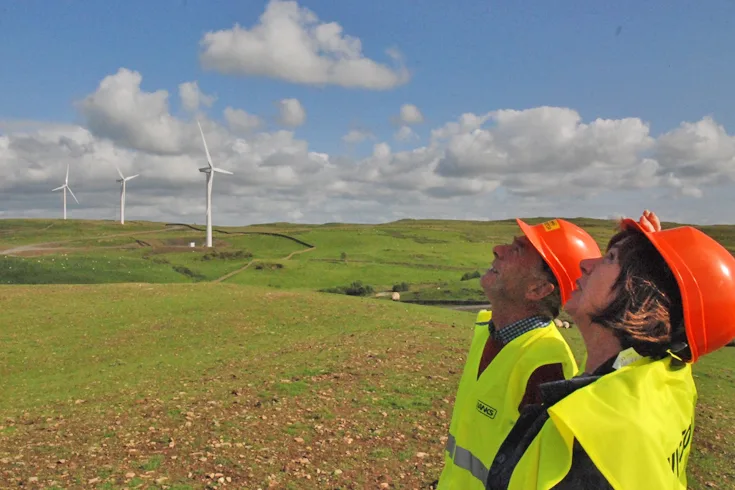
“Using the widest possible range of renewable energy generation technologies will allow the UK to decarbonise its power supply and achieve its climate change targets more quickly”
The two North West wind farms owned and operated by renewable energy firm Banks Renewables generated enough electricity in the company’s last financial year to meet the annual electricity needs of around 15,000 homes – the equivalent of a town the size of Penrith.
The Armistead scheme, which sits to the east of the M6 between junctions 36 and 37 in south Cumbria, and the Heysham South wind farm generated almost 45,000 MWh of electricity between them over the 12 months to the end of September.
And by doing so, they displaced around 9,500 tonnes of carbon dioxide from the electricity supply network.
The six-turbine Armistead wind farm led the way by generating over 25,000 MWh of green energy over the 12 months in question, with the three-turbine Heysham South scheme producing almost 19,400 MWh during the same period.
The two wind farms also delivered total revenues of over £25,000 between them during the year for their respective community benefits funds, which provide financial support for capital projects being undertaken by groups and good causes in their respective local communities.
Richard Dunkley, managing director at Banks Renewables, says: “We’ve now been generating green electricity in the North West for almost a decade, and despite calmer-than-usual weather conditions over our last financial year, the Armistead and Heysham South onshore wind farms are continuing to make a significant contribution to the UK’s drive towards its Net Zero objectives.
“Alongside this environmental benefit, our North West wind farms also make a direct and growing contribution to the long-term well-being of the communities in which they’re located, something which has been especially important over the last two years.
“Using the widest possible range of renewable energy generation technologies will allow the UK to decarbonise its power supply and achieve its climate change targets more quickly by increasing the amount of clean green electricity available to power our homes, schools and workplaces.”
